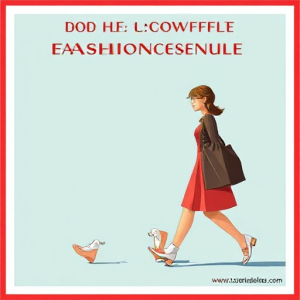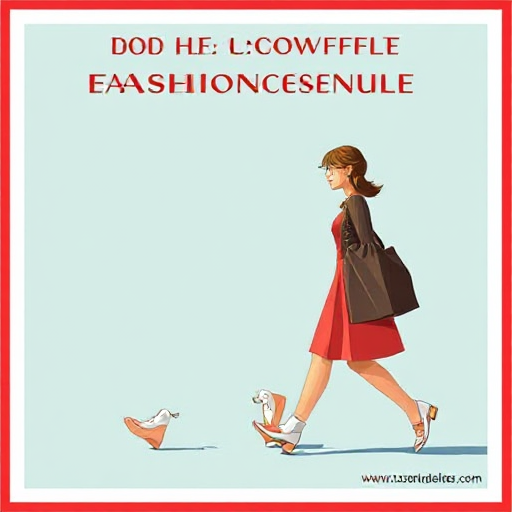
Advertising plays a crucial role in driving sales, attracting new customers, and establishing brand identity. However, creating a fashion ad that actually converts — turning viewers into paying customers — requires more than just stylish imagery. A high-converting fashion ad is an art that blends creative visuals, strategic messaging, and the perfect placement. This article will delve into the key elements of high-converting fashion ads and how brands can leverage these principles to boost their marketing efforts.
1. Understanding What Makes an Ad Convert
A high-converting ad is one that persuades viewers to take action, whether it’s making a purchase, signing up for a newsletter, or engaging with the brand in another meaningful way. The goal is not just to get eyes on your product but to encourage consumers to act on their interest.
To achieve this, fashion brands need to craft ads that:
- Speak to the consumer’s desires: Whether it’s showcasing a luxurious lifestyle or fulfilling a practical need, ads should appeal to emotions.
- Have a clear call-to-action (CTA): Direct the viewer on what to do next — buy now, learn more, or shop the collection.
- Target the right audience: Ads should be tailored to the audience’s tastes, interests, and demographics.
2. The Power of Visuals in Fashion Ads
Fashion is inherently visual, and your ads must reflect this to capture attention and make an impact. In fact, 80% of the human brain processes visuals faster than text, which is why striking, high-quality images are essential.
Here are some key visual elements that make fashion ads stand out:
- Showcase the Product in Context: Don’t just show the clothes; show how they’re worn. This could mean showing models walking on the street, at a party, or in any setting that aligns with your brand’s ethos.
- High-Quality Images: A blurry or poorly lit ad won’t make your fashion brand seem appealing. Invest in professional photography and editing to ensure every detail shines.
- Use of Color: Colors play a significant role in evoking emotion. For instance, bold colors may evoke excitement or confidence, while muted tones can suggest sophistication and elegance.
- Incorporate Lifestyle Shots: People relate to what they see themselves doing, so showing your clothes as part of everyday life can connect emotionally with your audience. Show how your products enhance a lifestyle.
3. Effective Messaging and Copywriting
While visuals capture attention, words sell. In a crowded market, your ad copy needs to be concise, compelling, and aligned with the desires of your target customer.
When crafting your message, consider these strategies:
- Highlight the Benefits: Focus on how your product improves the consumer’s life. For instance, a jacket isn’t just stylish; it’s also warm, durable, and versatile.
- Urgency and Scarcity: Use phrases like “limited edition” or “while supplies last” to create a sense of urgency that encourages immediate action.
- Storytelling: A compelling story can make a huge difference. Tell the story behind the brand, the materials, or the inspiration behind the collection. This adds depth to your product.
- Use Action-Oriented Words: Encourage your customers to act immediately with clear CTAs like “Shop Now,” “Buy Today,” or “Discover Your Style.”
4. Leverage Social Proof and Influencer Marketing
Social proof, such as customer reviews, testimonials, and influencer partnerships, helps build trust and authenticity around your fashion brand. Over 79% of consumers say user-generated content significantly impacts their purchasing decisions.
- Influencers: Partner with fashion influencers who align with your brand’s style. Their endorsement can be a powerful form of social proof that converts followers into customers.
- Customer Reviews: Highlight positive reviews or showcase user-generated content (UGC) on your ads to show potential customers that others are enjoying your products.
- Celebrity Endorsements: If possible, collaborate with well-known figures who resonate with your target audience. Their association with your brand can elevate its credibility.
5. Targeting the Right Audience
Creating ads for a broad audience is less effective than personalizing your ads to fit specific groups. With the help of advanced targeting on platforms like Facebook, Instagram, and Google Ads, fashion brands can ensure their ads reach the people most likely to buy.
- Demographics and Interests: Target users based on gender, age, location, and specific interests such as fashion trends, specific clothing styles, or influencers they follow.
- Behavioral Targeting: Reach users who have shown previous interest in fashion or similar brands by tracking online behaviors, such as browsing patterns and past purchase history.
- Retargeting: Retarget people who have visited your website or interacted with your social media profiles. This reinforces brand awareness and increases conversion rates.
6. Optimize Ads for Mobile
The fashion industry is heavily influenced by mobile shopping, as many users shop on their phones or tablets. According to Statista, over 70% of e-commerce sales are made on mobile devices.
To create high-converting mobile-friendly ads:
- Simplify Your Design: Mobile screens are small, so keep your ad design clean and clutter-free. Focus on one clear visual and CTA.
- Make Shopping Easy: Ensure your ad links directly to the product page, and if you have an app, make sure the experience is optimized for mobile.
- Responsive Design: Make sure your ad looks great across all devices. Avoid text that’s too small or images that don’t scale properly.
7. A/B Testing for Optimization
A high-converting fashion ad doesn’t happen by chance. To ensure you’re getting the best results, A/B testing is essential.
- Test Visuals: Try different images, layouts, and even color schemes to see what resonates most with your audience.
- Test Ad Copy: Experiment with various headlines, product descriptions, and CTAs to find out what leads to the highest conversion rates.
- Monitor Metrics: Track key performance indicators (KPIs) such as click-through rates (CTR), cost per acquisition (CPA), and return on ad spend (ROAS) to gauge success.
8. Seasonal and Trend-Based Ads
Fashion is ever-evolving, and being timely with your advertising is critical. Seasonal ads or ads tied to trending topics, events, or collections can have a significant impact.
- Holiday Campaigns: Use occasions like Black Friday, Christmas, or Valentine’s Day to create themed ads that tap into the consumer buying frenzy.
- Trend-Driven Ads: Capitalize on fashion trends (e.g., sustainability, gender-neutral clothing, or streetwear) by showcasing your brand as part of the conversation.
- Limited-Time Offers: Ads promoting limited-time sales or exclusive collections create urgency and drive quick conversions.
Fashion ads are more than just pretty pictures — they are an essential part of driving conversions and achieving business success. By focusing on high-quality visuals, compelling messaging, social proof, effective targeting, and continuous optimization, you can create ads that not only capture attention but also drive meaningful actions from your audience.
In an industry where trends change rapidly, understanding what motivates your audience and crafting ads that resonate with them is key. With the right strategies in place, your fashion ads can become powerful tools for turning prospects into loyal customers.
